Explainer: How does moss survive in Antarctica?

SAEF scientists Professor Sharon Robinson and Georgia Watson completing fieldwork in the moss beds in February 2022. Credit: Emiliano Cimoli

Moss can survive being frozen for up to 9 months of the year. Credit: Krystal Randall
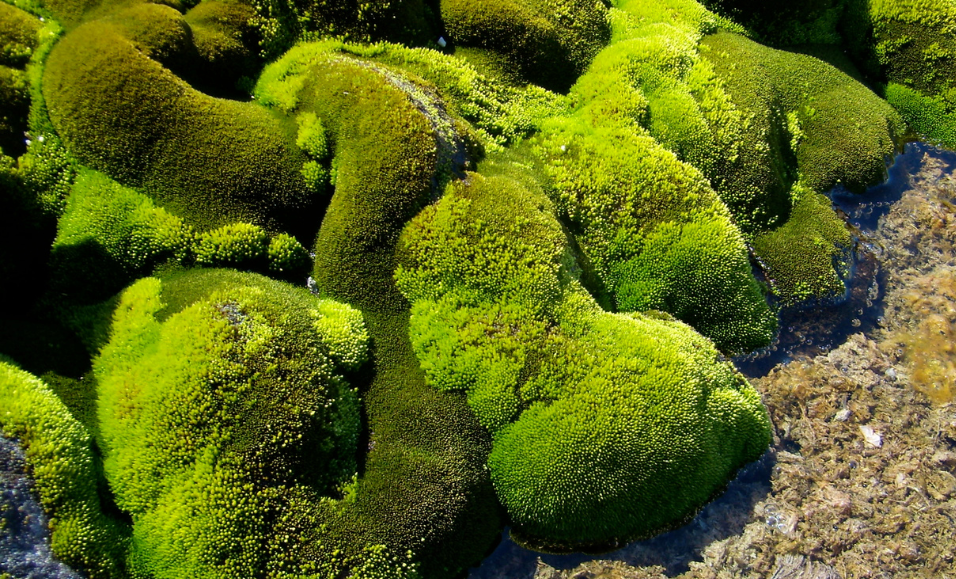
Lush green Antarctic moss. Credit: Sharon Robinson

A moss bed in the Windmill Island region. Credit: Emiliano Cimoli
Some of the most extensive moss beds are found in the Windmill Islands near Australia’s Casey Station. Here, moss is found in lush turfs which have been monitored by scientists for over 20 years.
Their research has unveiled how these mosses not only survive but thrive in Antarctica’s extreme conditions.
But research is also showing how the impacts of climate change and ozone depletion are becoming increasingly evident, and altering the lives of these mosses in ways scientists, including our team led by Professor Sharon Robinson at the University of Wollongong, are still working to understand.
What is moss?
Mosses are diminutive, non-flowering plants that lack roots and instead possess rhizoids – hairlike structures that anchor them to rocks or soil. Without roots, they draw in moisture through their highly absorbent leaves.
These mosses provide habitat for tiny organisms, such as tardigrades, fostering a delicate ecosystem in miniature within Antarctica’s extreme environment.

Map of the Windmill Islands where some of Antarctica’s most extensive moss beds are located.
How does moss survive?
Like any plant, mosses need water, sunlight and nutrients to photosynthesise and grow. But in a frozen desert, where water is locked in ice, sunlight disappears for half the year and nutrients are hard to come by, they’ve had to adapt.
Water
Antarctic mosses have adapted to survive yearly cycles of freezing and thawing. They can tolerate up to 9 months dried and frozen beneath the snow without water. Then in the summer, once the temperature rises above 0° C, the ice melts providing water so they can flourish. This period is short, spanning only 40 to 100 days.
Sunlight
Antarctica experiences some of the steepest shifts in seasonal solar angles and daylight hours. In the darkness of winter when the sun disappears for months, the ice and snow act like a protective blanket buffering the moss from wind damage and extreme cold temperatures, which in the Windmill Islands can plummet to –40° C.
When the sun reappears, this blanket melts, exposing the moss to sunlight and warmth. Photosynthesis occurs when the moss canopy temperature is above 5° C.
Often in the warmer months snowfall will briefly cover the moss again, but depending on the depth of the snow, sunlight can still reach the underlying leaves, warming the canopy and melting the underlying snow to provide water. Remarkably this creates an “icehouse” effect allowing sunlight to enter whilst providing protection from dry air and wind.
Nutrients
Antarctic soils are quite nutrient poor, predominantly relying on penguins and seals for their enrichment via guano. This means moss often grows adjacent to nesting and breeding sites.
While the nutrient loads in modern penguin colonies are far too high for moss, the weathered guano in ancient penguin colonies offers the perfect sustenance. The moss near Casey Station draws its historical supply of nutrients from sites where penguins nested 3,000 to 8,000 years ago.
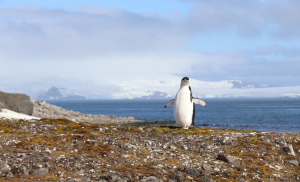
A Chinstrap penguin in a moss bed on the Antarctic Peninsula. Credit: Krystal Randall
What is a moss microclimate?
Within their canopy, mosses create their own microclimate that differs from the broader Antarctic climate. This enables them to maximise heat accumulation and minimise heat loss, supporting their growth and survival.
To create this microclimate, moss has a unique physical structure. Firstly, its has a small size and ground hugging shape. Secondly, their leaves have a large surface area to maximise the absorption of sunlight and water and grow densely to reduce heat and water loss. Thirdly, they produce dark pigments to soak up sunshine and warm the moss canopy. These factors all help to create a climate of warmer, humid air surrounding the leaves.
Incredibly, through this process mosses can achieve a canopy temperature of 20 – 30° C in full sunlight when the air temperature is close to 0° C. This supports moss to reach the optimum temperature for photosynthesis for most plants of around 20° C to grow.

Mosses with very different canopy temperatures, ranging from 19°C where the moss is green (and able to photosynthesise) to 0°C where the moss is moribund (and almost completely inhibited from photosynthesising). Credit: Krystal Randall
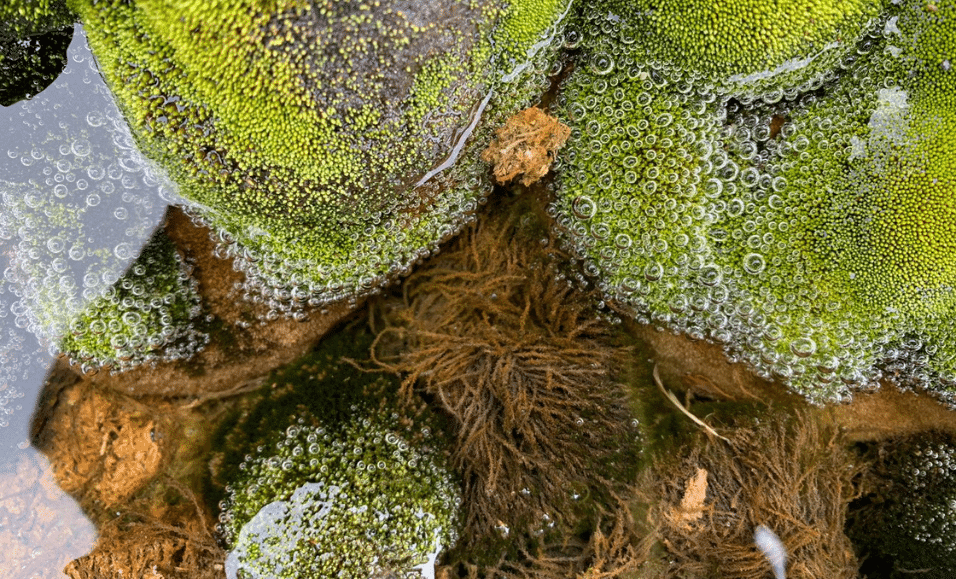
Bryum pseduotriquetrum coping well with being underwater. The bubbles show that photosynthesis is occurring. Credit: Krystal Randall
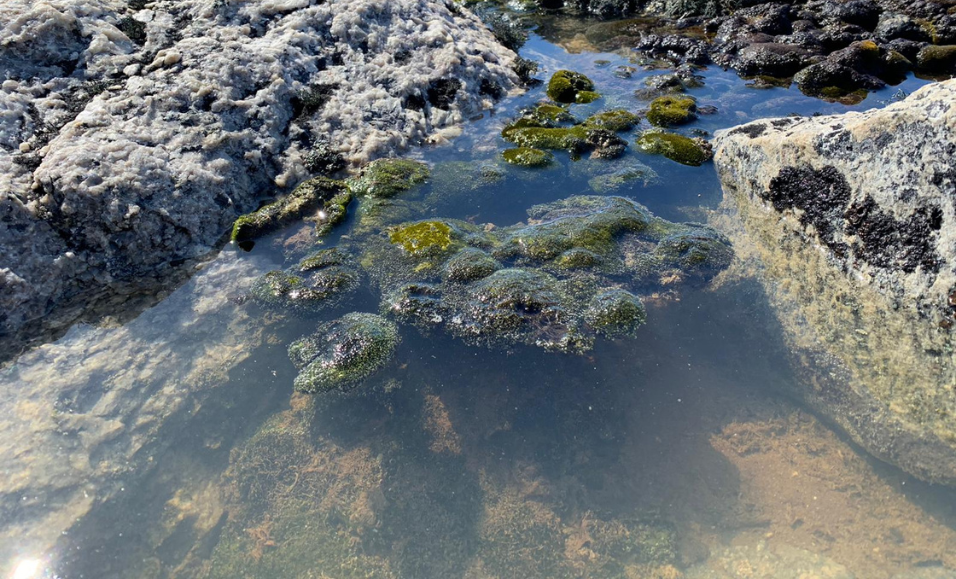
A large piece of moss floating in water after being displaced. Credit: Krystal Randall
How is moss impacted by UV radiation?
The hole in the ozone is particularly pronounced over Antarctica which leads to higher levels of UV radiation in the region. An international agreement called the Montreal Protocol has led to global collaboration to phase out chlorofluorocarbons. This will likely see the recovery of the ozone hole by mid-century.
Currently UV radiation in Antarctica usually peaks in September – October, when most moss is covered by snow. But recently this peak has been lasting until December, coinciding with snowmelt and the emergence of the moss from beneath the snow.
Mosses are generally well protected from UV radiation by their production and storage of specialised UV-absorbing and UV-screening compounds which act like sunscreen. However the depleted ozone layer subjects mosses to elevated doses of UV radiation which can harm its cells and processes, such as photosynthesis.
How do mosses produce their own sunscreen?
Mosses can protect themselves from solar radiation by adjusting their protective pigments in a highly agile way allowing them to acclimatise and thrive in extreme conditions.
In winter when the mosses are covered by ice and snow, their pigments can adjust to cope with the shaded environment. Meanwhile in summer, the mosses increase production of sunscreens to protect the photosynthetic machinery from high levels of UV radiation while maintaining photosynthetic rates.
There is evidence that sunscreens may be useful to scientists as climate proxies due to the way they accumulate in mosses under desiccation, nutrient deprivation, extreme temperature conditions and elevated UV radiation.
What is the likely future for mosses under climate change?
So far climate change in Antarctica has resulted in increased air temperature, higher wind speeds over the Southern Ocean, more snow accumulation and extreme events becoming more common. The future of the mosses is linked to these changes.
Some predicted impacts include:
Drying trend
Since 1993, the number of melt days has declined due to cooler temperatures caused by strong winds linked to ozone depletion. This has caused the moss beds to become drier due to less water availability.
Heat stress
Currently, a moss’s microclimate allows it to maintain surface temperatures similar to plants from milder climates for photosynthesis and growth. This is a great adaptation for the current climate, but scientists are unsure how the moss will respond to higher temperatures, including heatwaves.
Increased growth
Higher temperatures are likely to cause the moss to experience wetter conditions which could lead to increased growth. Following flooding caused by a heatwave in 2020 there was greening of a large, previously moribund moss bed in the Vestifold Hills. Warmer temperatures are also likely to open up new ice-free areas for colonisation, allowing the moss to spread. But sudden ice melt can also be damaging, creating floods that can wash clumps of moss away.
Species change
While wetter and warmer conditions might benefit some species, it may not be beneficial to others. For example in the Windmill Islands, widespread mosses are shifting into areas previously dominated by Antarctic specialist moss species.
Isolation
Scientists are also worried that retreat of ice due to climate heating could leave moss stranded; no longer able to access the melt water streams that have supplied them with water for centuries.
In order to accurately monitor moss health in real time, SAEF scientists and engineers are currently using new remote sensor technology, drone data, AI and high-resolution modelling. This means they can provide up-to-date information to support conservation planning to ensure the mosses survive long into the future.
The resilient mosses of Antarctica have captivated scientists for decades. Today, our researchers are continuing to unravel the complex relationship between moss and its ever-changing environment.

The new AIoT remote sensor system currently being developed by SAEF scientists at the University of Wollongong and NVIDIA. Credit: Johan Barthelemy
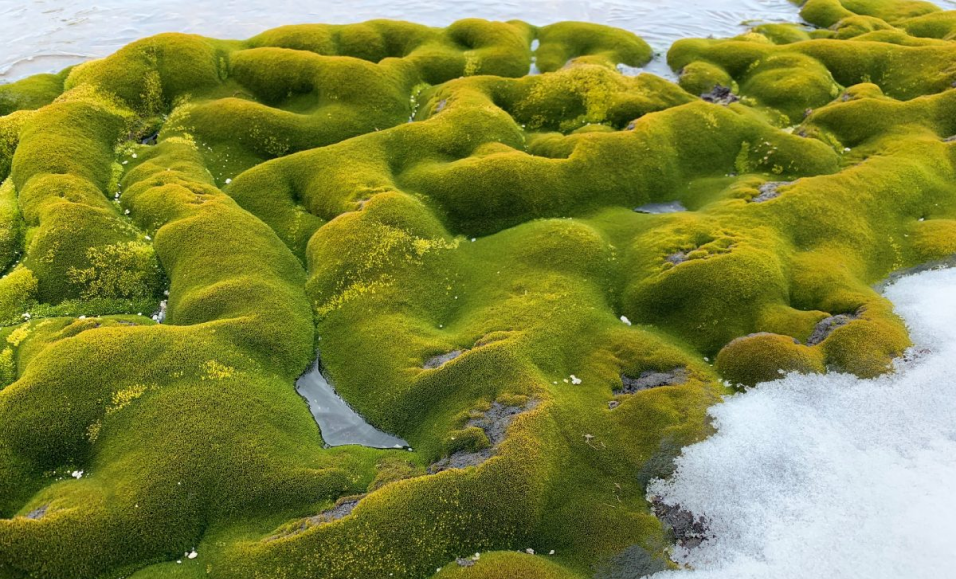
Healthy moss. Credit: Sharon Robinson
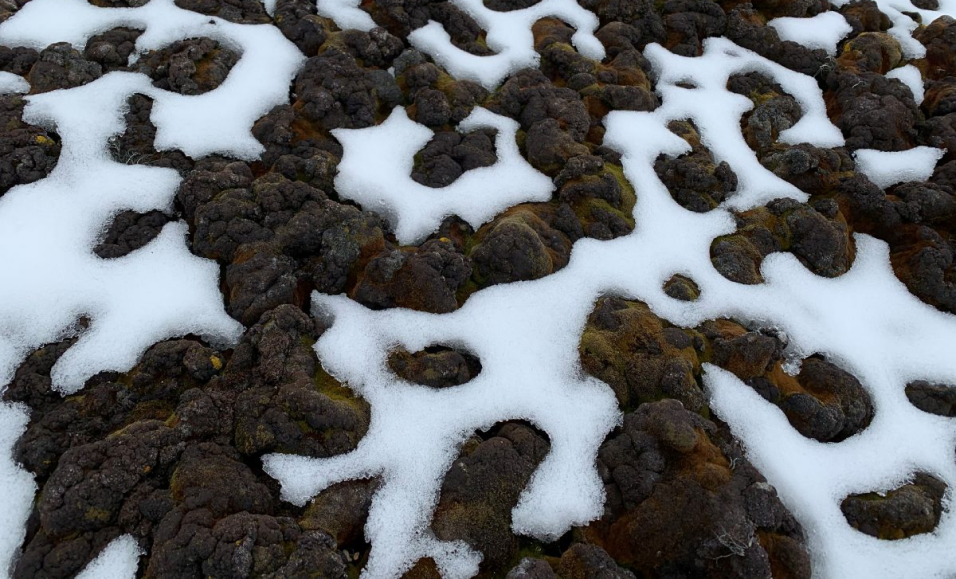
Moribund moss. Credit: Sharon Robinson
Read more
Yin, H., Perera-Castro, A.V., Randall, K.L., Turnbull J.D., Waterman M.J., Dunn, J. & Robinson, S.A. (2023) Basking in the sun: how mosses photosynthesise and survive in Antarctica. Photosynth Res. https://doi.org/10.1007/s11120-023-01040-y
Lee, J., Waterman, M., Shaw, J., Bergstrom, D., Lynch, H., Wall, D., Robinson, S.A. (2022) Islands in the ice: Potential impacts of habitat transformation on Antarctic biodiversity. Global Change Biology. 5865-5880. https://doi.org/10.1111/gcb.16331
Perera Castro, A.V. Waterman, M.J., Turnbull, J.D., Ashcroft, M.B., McKinley, E. Watling, J.R., Bramley-Alves, J.,Casanova-Katny, A., Zuñiga, G.E., Flexas, J., Robinson, S.A. (2020) It is hot in the sun: Antarctic mosses have high temperature optima for photosynthesis despite cold climate. Frontiers in Plant Science. https://10.3389/fpls.2020.01178
Robinson, S. A., King, D. H., Bramley-Alves, J., Waterman, M. J., Ashcroft, M. B., Wasley, J., Turnbull, J. D., Miller, R. E., Ryan-Colton, E., Benny, T., Mullany, K., Clarke, L., Barry, L. A., & Hua, Q. (2018) Rapid change in East Antarctic terrestrial vegetation in response to regional drying. Nature Climate Change. https://doi.org/10.1038/s41558-018-0280-0.
Turner, D., Cimoli, E., Lucieer, A., Haynes, R., Randal, K., Waterman, M., Lucieer, V. Robinson, S.A. Mapping water content in drying Antarctic moss communities using UAS-borne SWIR imaging spectroscopy. Remote Sensing in Ecology and Conservation. https://doi.org/10.1002/rse2.371